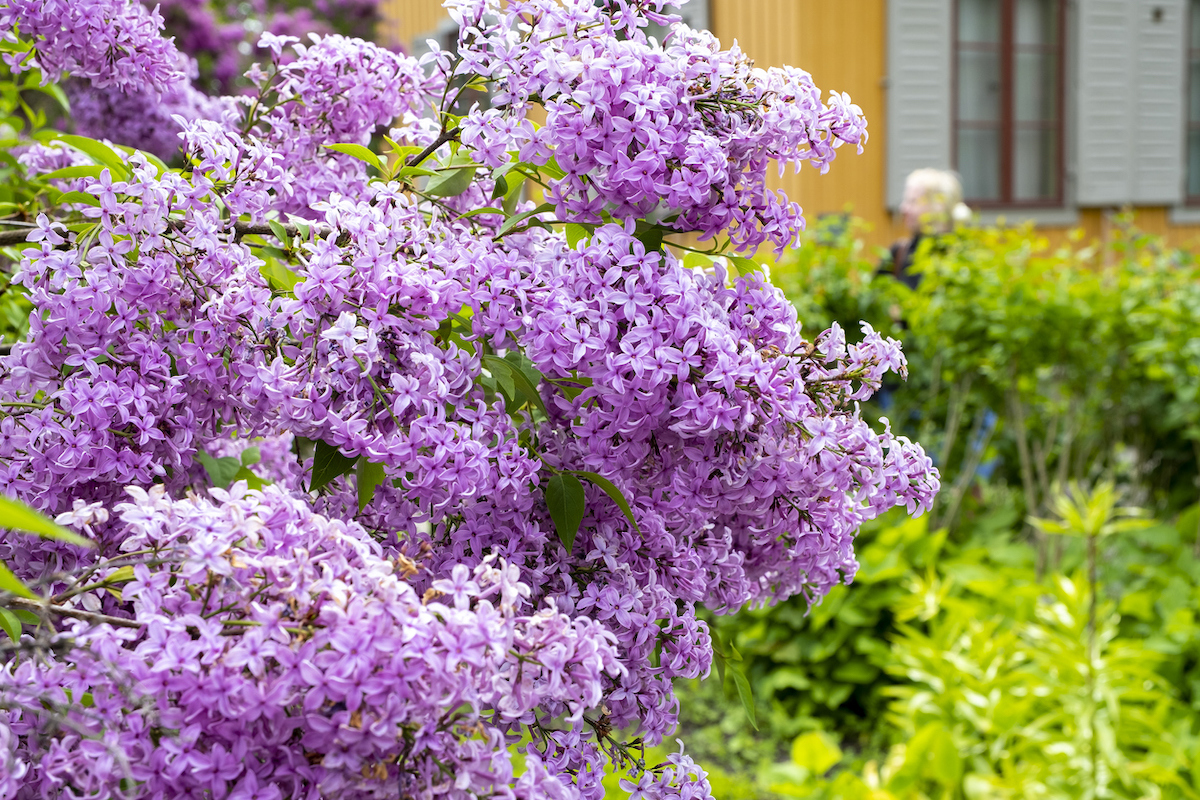

We may earn revenue from the products available on this page and participate in affiliate programs. Learn More ›
The color purple has long been associated with power and prominence, as “born to the purple” means born into royalty. And, in the U.K., “having a purple patch” means having a period of success. Here, it could mean planting purple-flowering or purple-foliaged shrubs to offset the warmer hued ones.
Keep in mind that flowers called “blue” often are shades of purple instead, since true blue is uncommon in the plant world. And foliage called “black” often actually is dark purple. Most of these purple shrubs perform best in full sun, though some tolerate partial shade and brunfelsia prefers it.
RELATED: How to Grow Purple Heart Plants
1. Bluebeard (Caryopteris spp.)
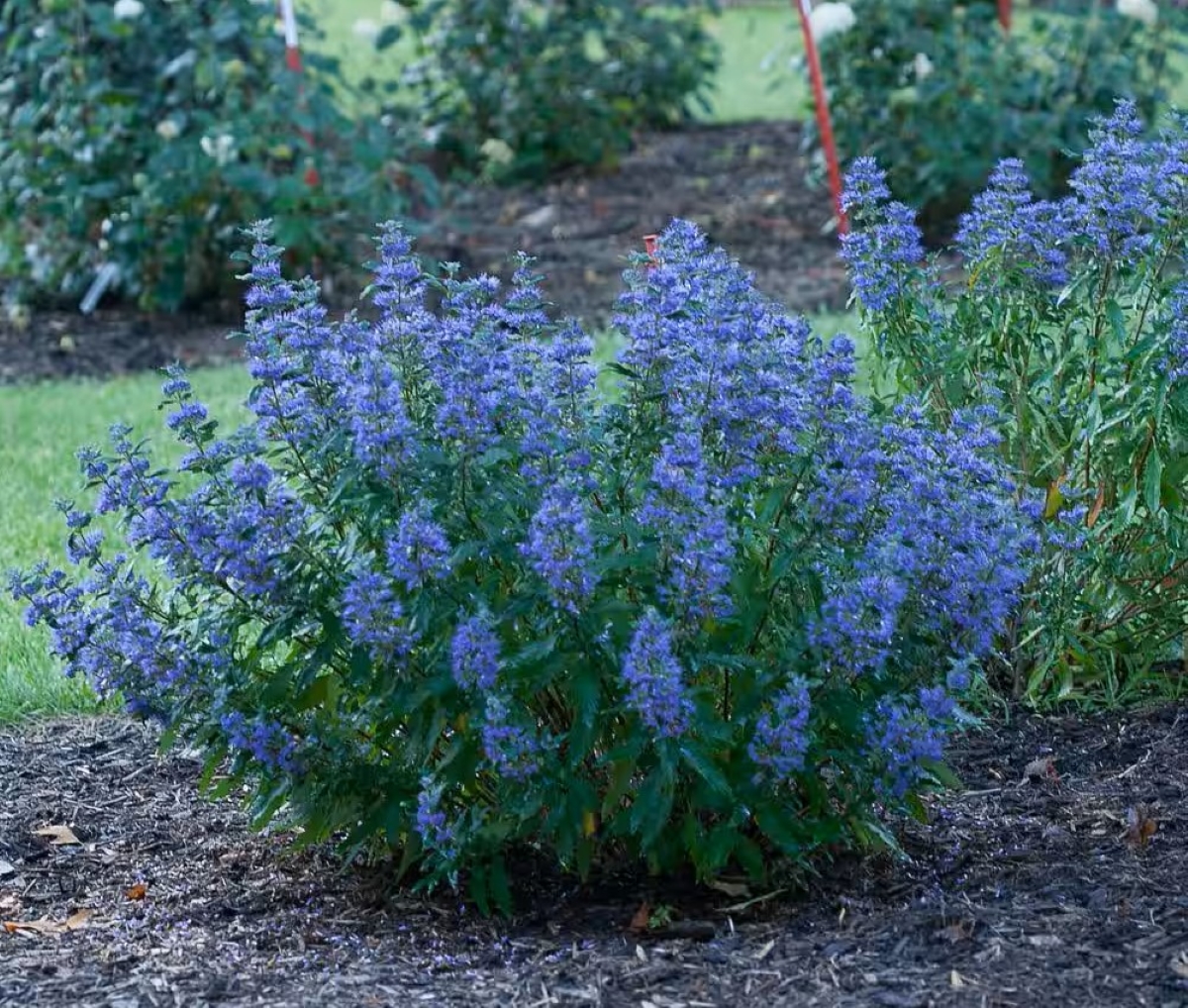
Still one of the more uncommon purple-flowering shrubs, this deciduous type also blooms at an uncommon time—late summer—after the flowers of many other shrubs have faded. It grows 3 to 4 feet tall, and its “beards” (airy violet-blue flower clusters) appear either at the tips of the plants’ stems or in the leaf joints. Bluebeard’s hardiness typically varies from USDA Zones 5 to 9, though C. incana ‘Sunshine Blue’ can handle heat up to Zone 11. The shrub usually will die back to the ground over winter in Zones 5 and 6 and should be cut back hard in spring in warmer zones.
USDA Plant Hardiness Zones: 5 to 9
Best For: Border, butterfly garden
2. Blue Hibiscus (Alyogyne huegelii)
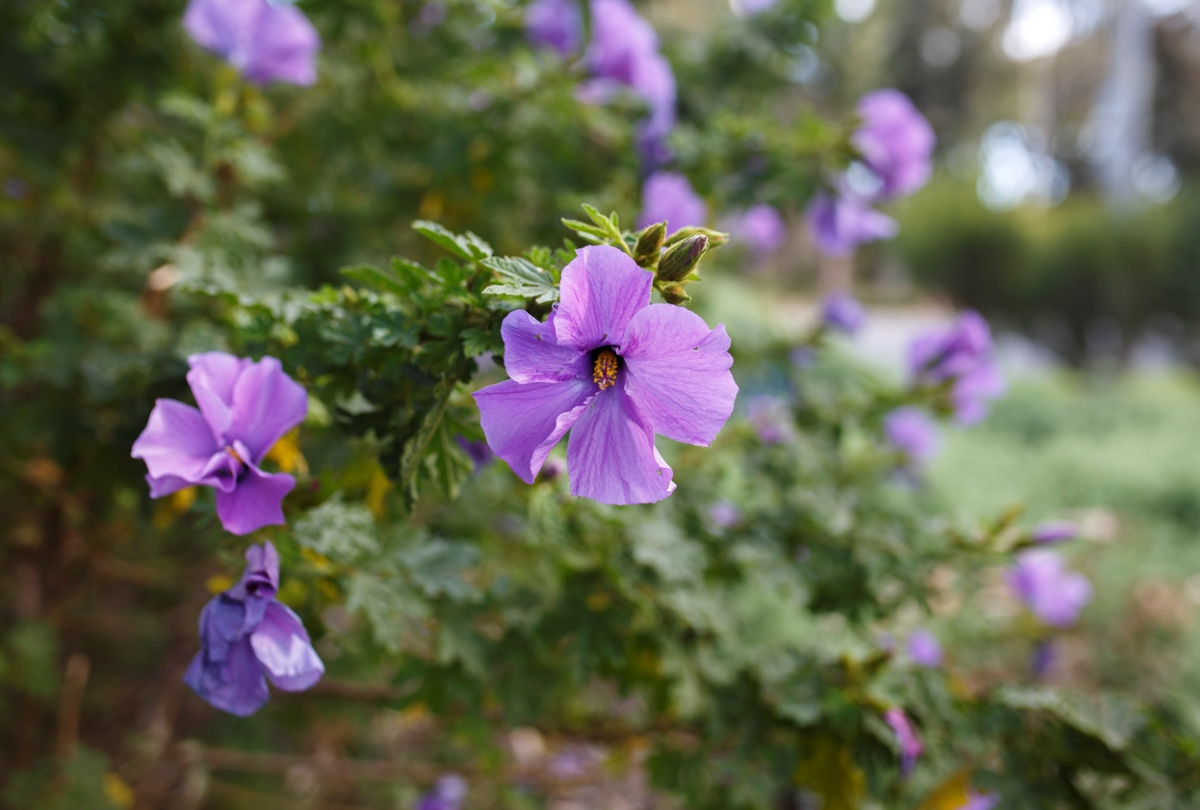
The blue hibiscus isn’t actually a hibiscus, though it does produce hibiscus-like blooms 4 inches across. Varying from 4 to 8 feet tall with finely divided evergreen foliage, this purple flowering bush blooms year-round but most heavily in late spring and early summer. If you keep it out of drying winds, each flower should last at least 3 days. Bloom colors range from violet blue for the Mood Indigo cultivar to dark purple for Monterey Bay.
USDA Plant Hardiness Zones: 9 to 11
Best For: Xeriscaping, patio
3. Blue Potato Bush (Lycianthes rantonnetii)
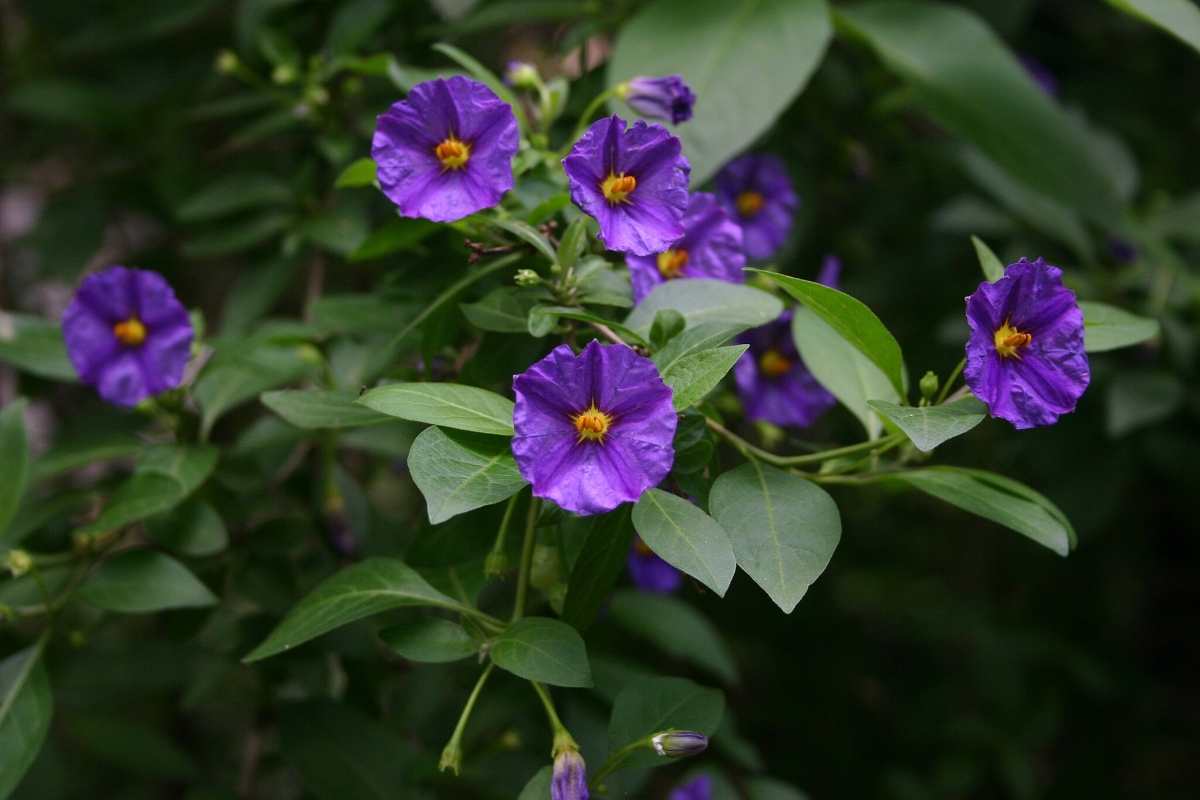
The blue potato bush isn’t actually a potato either! Rather, it is an informal shrub that tops off at between 8 and 12 feet with oval evergreen leaves and year-round violet-blue blooms varying from ½ to 1½ inches in width, depending on the cultivar. Choose Royal Robe for dark purple flowers, or Lynn’s Variegated for blue-purple blooms against white-variegated foliage. Avoid its use in highly manicured landscapes, where it tends to look out of place.
USDA Plant Hardiness Zones: 9 to 11
Best For: Border, patio
4. Butterfly Bush (Buddleja davidii)
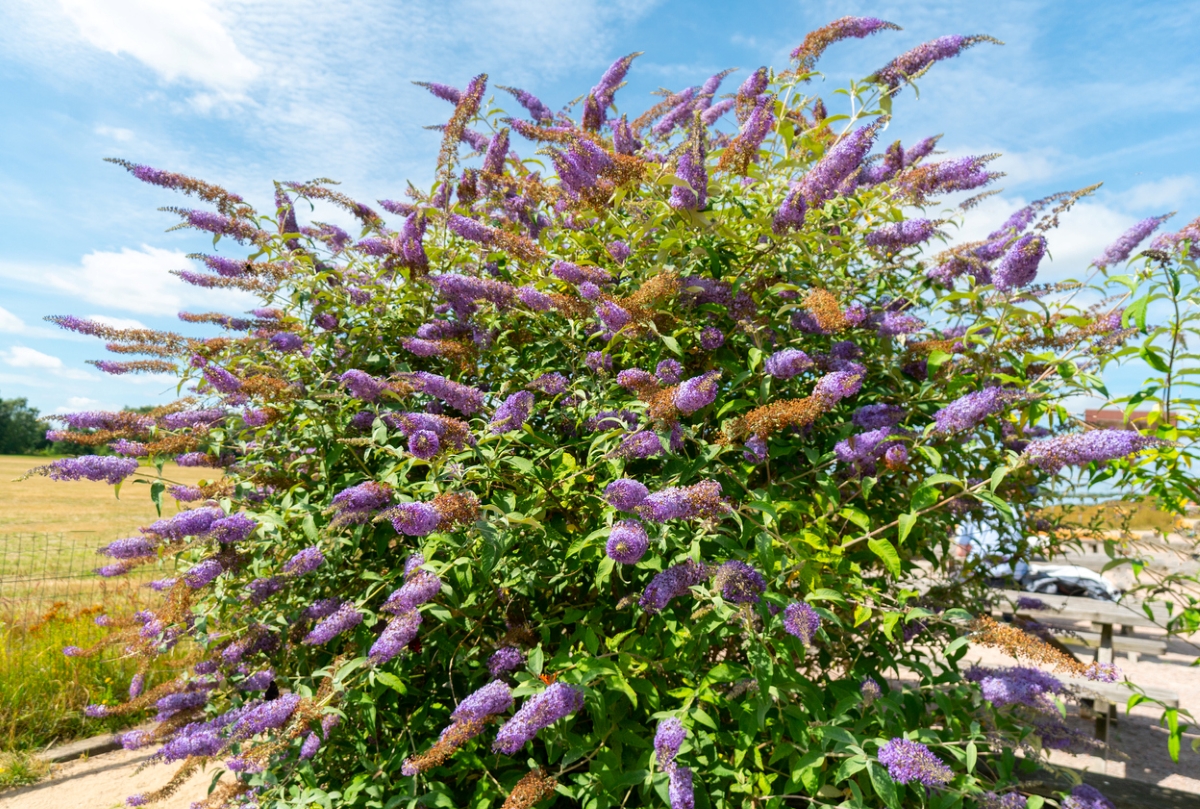
This deciduous to semi-evergreen flower bush, sometimes also called summer lilac, grows from 5 to 15 feet tall and produces long clusters of fragrant flowers, many of them like lilac in color as well as in form. Butterfly bush can bloom almost all summer in some zones, and usually just in mid- to late summer in the northernmost areas of its range where it dies back to the ground during winter. Gardeners in climates where the plant is invasive should choose sterile cultivars that don’t produce seed such as two Lo & Behold cultivars: Blue Chip (lavender flowers) and the darker Purple Haze.
USDA Plant Hardiness Zones: 5 to 9
Best For: Butterfly garden, pollinator garden
5. Eastern Ninebark (Physocarpus spp.)
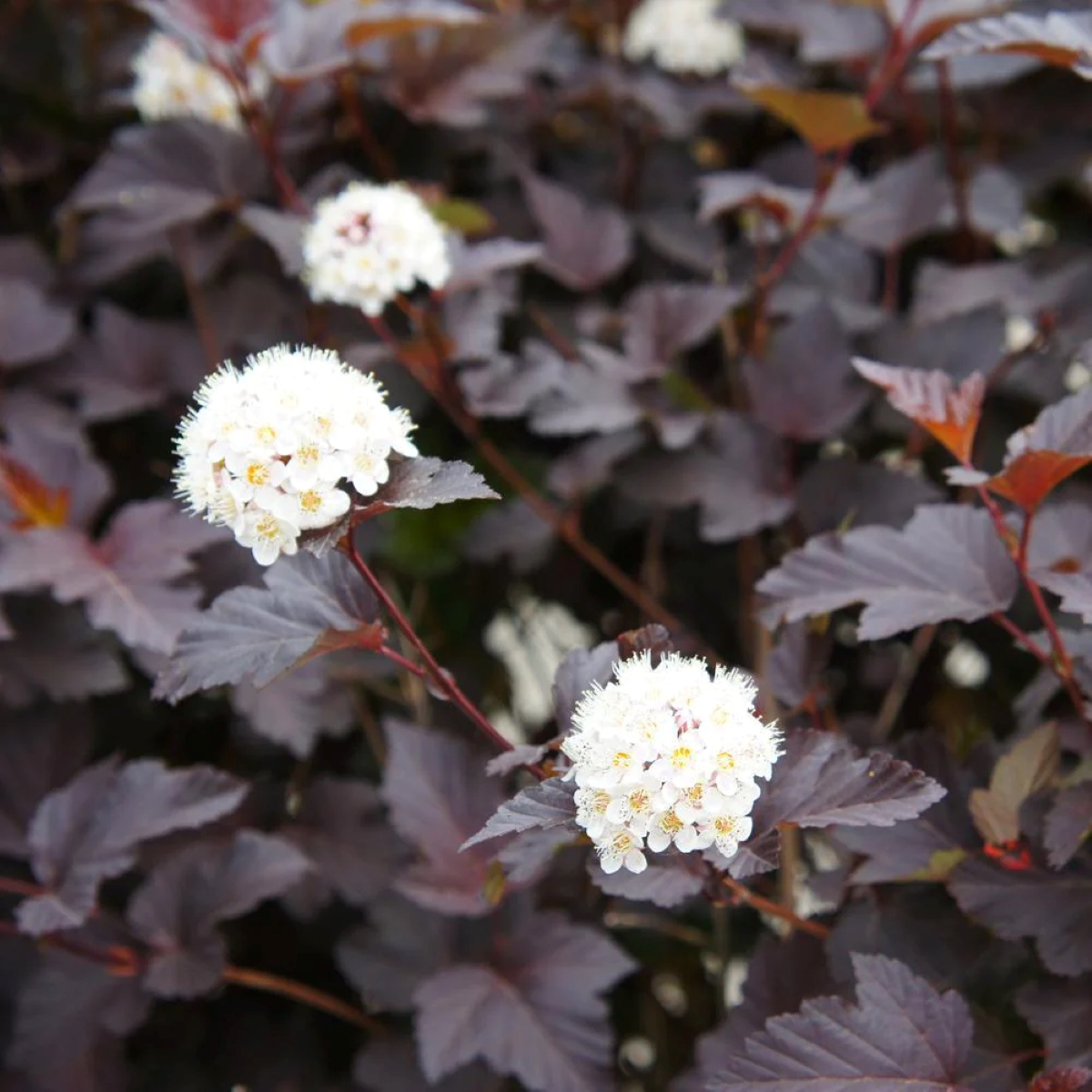
If you would prefer purple foliage rather than purple flowers, try deciduous native ninebarks such as Diabolo (P. opulifolius ‘Monlo’), with reddish purple leaves, and Summer Wine (P. opulifolius ‘Seward’) with dark purple ones. Also valued for their attractively peeling bark, these purple shrubs grow from 4 to 8 feet high with clusters of bee-attracting spirea-like pink or white flowers in spring or early summer. Keep in mind that the purple foliage may revert to dark green in shady sites.
USDA Plant Hardiness Zones: 2 to 7
Best For: Hedge, native garden
6. Elderberry (Sambucus nigra)
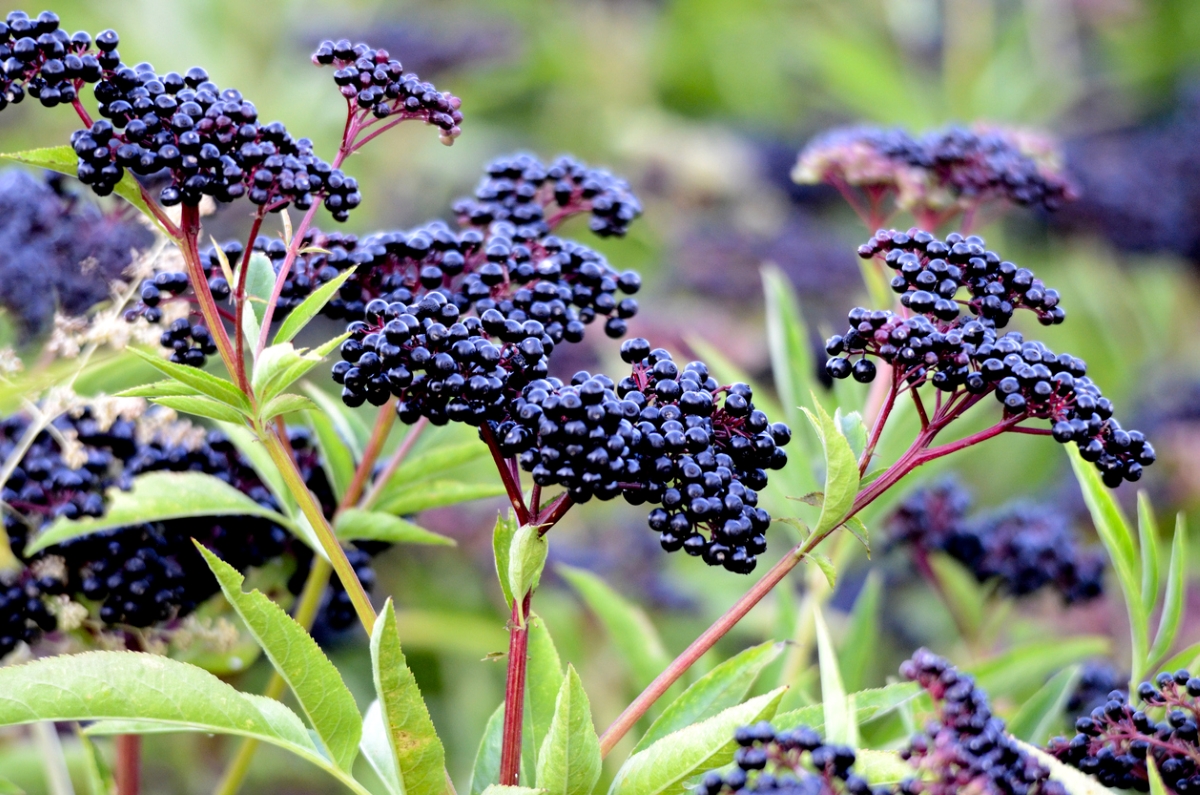
Varying in height from 7 to 12 feet tall, dark and deciduous elderberry shrubs such as Black Beauty and Black Lace offer purple-black foliage accompanied by pink blooms in late spring and early summer. They may eventually even produce purple-black elderberries if you grow more than one bush for the best pollination. Those berries can be somewhat toxic if consumed raw.
USDA Plant Hardiness Zones: 4 to 7
Best For: Hedge, naturalizing
7. Glory Bush (Tibouchina spp.)
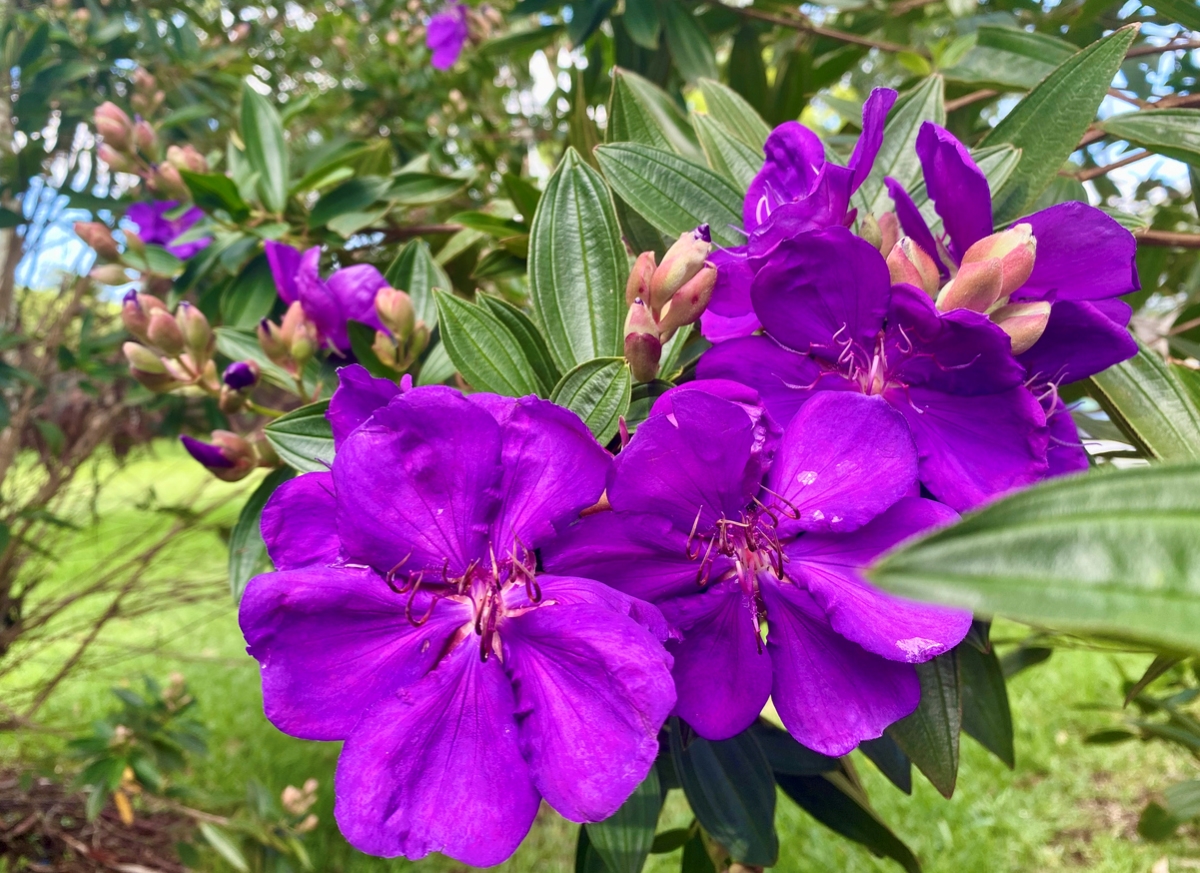
Another of the shrubs with purple flowers, the glory bush varies from 4 to 18 feet tall and produces dark purple 1- to 3-inch single blooms against a backdrop of evergreen velvety oval leaves tinged with silver or with orange or red. Some species of these flowering bushes bloom from late spring to winter, some only in autumn and winter. They occasionally can survive down to USDA Zone 8, by dying back to the ground every winter and only reappearing in spring.
USDA Plant Hardiness Zones: 9 to 11
Best For: Container, patio
RELATED: 15 Low-Maintenance Evergreen Shrubs You Never Need to Trim
8. Golden Dewdrop (Duranta erecta)
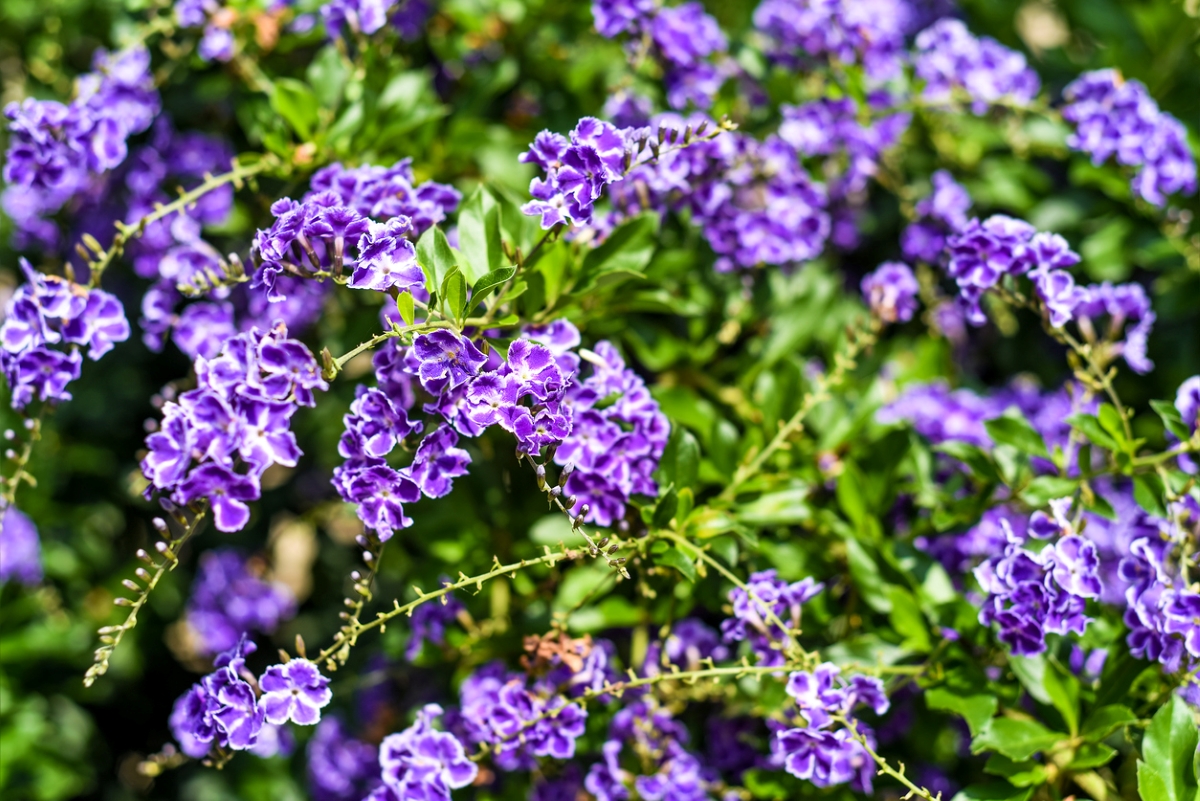
Despite its common name, which refers to its berries, this evergreen bush with purple flowers is only golden after it produces its clusters of blooms in summer and autumn, with each floret often charmingly edged with white as in Geisha Girl and Sapphire Showers. Duranta varies from 10 to 25 feet in ultimate height and might be thorny. Those aforementioned golden fruits actually are highly toxic, so avoid this shrub if you have berry-eating children or pets.
USDA Plant Hardiness Zones: 9 to 11
Best For: Container, privacy screen
9. Lilac (Syringa vulgaris)
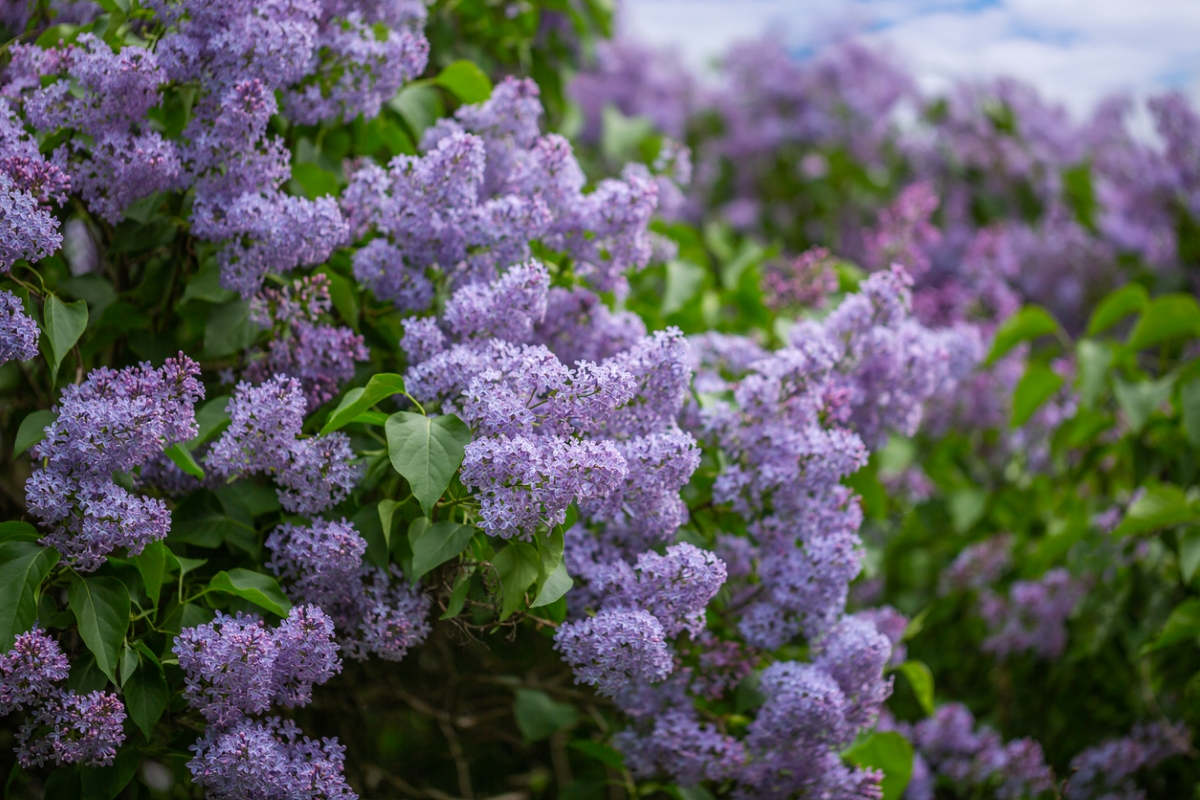
Lilac in name and often an even darker shade of purple in color, syringa cultivars are a must-have for gardeners passionate about purple. Growing from 8 to 16 feet with rather plain deciduous foliage, they produce fragrant and extravagant clusters of spring flowers in hues ranging from the lilac of the species variety to the dark purple of Yankee Doodle. Granted, there are a few white, pink, and yellow cultivars as well, but lilac varieties specialize in the royal color.
USDA Plant Hardiness Zones: 3 to 7
Best For: Hedge, small tree
10. Rose (Rosa spp.)
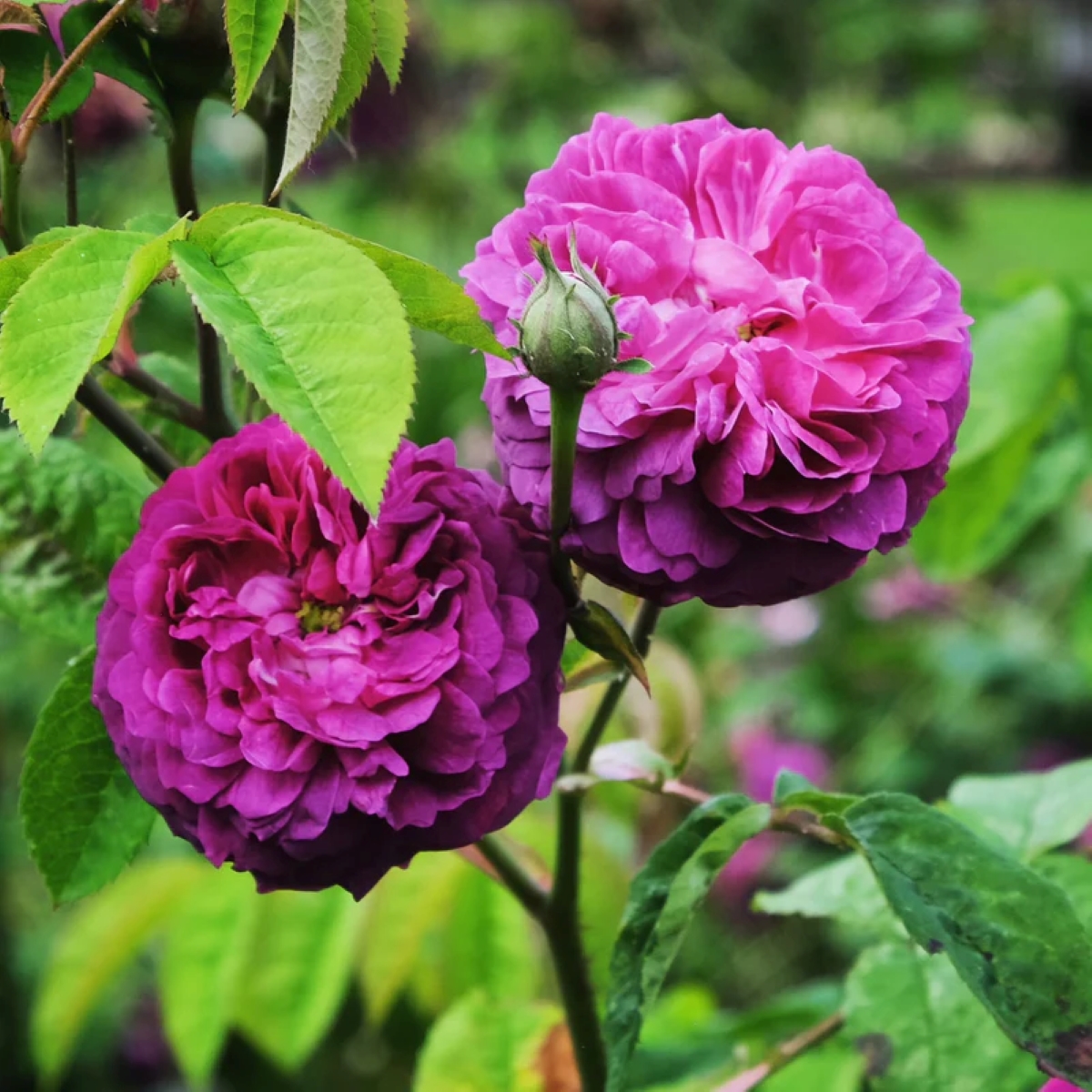
Although rose bushes with purple flowers are rare—their name implying pink instead—there are a few cultivars that qualify. Those vary from the violet hues of the heirloom hybrid perpetual Reine des Violettes to the purple-black shades of the more modern Midnight Blue. Usually deciduous, roses may be evergreen in the warmest zones and come in every size from 8-inch ground cover types to 50-foot climbers. Where they lose their leaves, some varieties boast reddish-purple canes in winter.
USDA Plant Hardiness Zones: varies from 3 to 10
Best For: Cottage garden, cutting garden
RELATED: Boost Your Home Security by Adding These Thorny Plants to Your Landscape
11. Smokebush (Cotinus coggygria)

Topping out at 12 to 25 feet, smokebushes also can be trees when pruned to make only one trunk. Although their puffs of smoke, composed of hairs produced by their fading flowers, have a reddish-lavender hue, cultivars such as Royal Purple and Velvet Cloak are named for the dark purple shade of their deciduous foliage instead (assuming they get at least 6 hours of sun a day). These shrubs actually prefer poor and sandy—or at least very well draining—soil.
USDA Plant Hardiness Zones: 4 to 10
Best For: Hedge, xeriscaping
12. Weigela (Weigela spp.)

Also among shrubs known for “black” leaves, weigalas grow from 3 to 10 feet tall and usually produce funnel-shaped pink blooms. However, those show up to advantage against a backdrop of dark purple deciduous foliage in cultivars such as Dark Horse and Wine and Roses. For the best bloom on this purple bush, “The New Sunset Western Garden Book” recommends that you cut back your weigela by one-half every other year after it flowers.
USDA Plant Hardiness Zones: 4 to 8
Best For: Hedge, hummingbird garden
13. Yesterday, Today, and Tomorrow (Brunfelsia pauciflora)
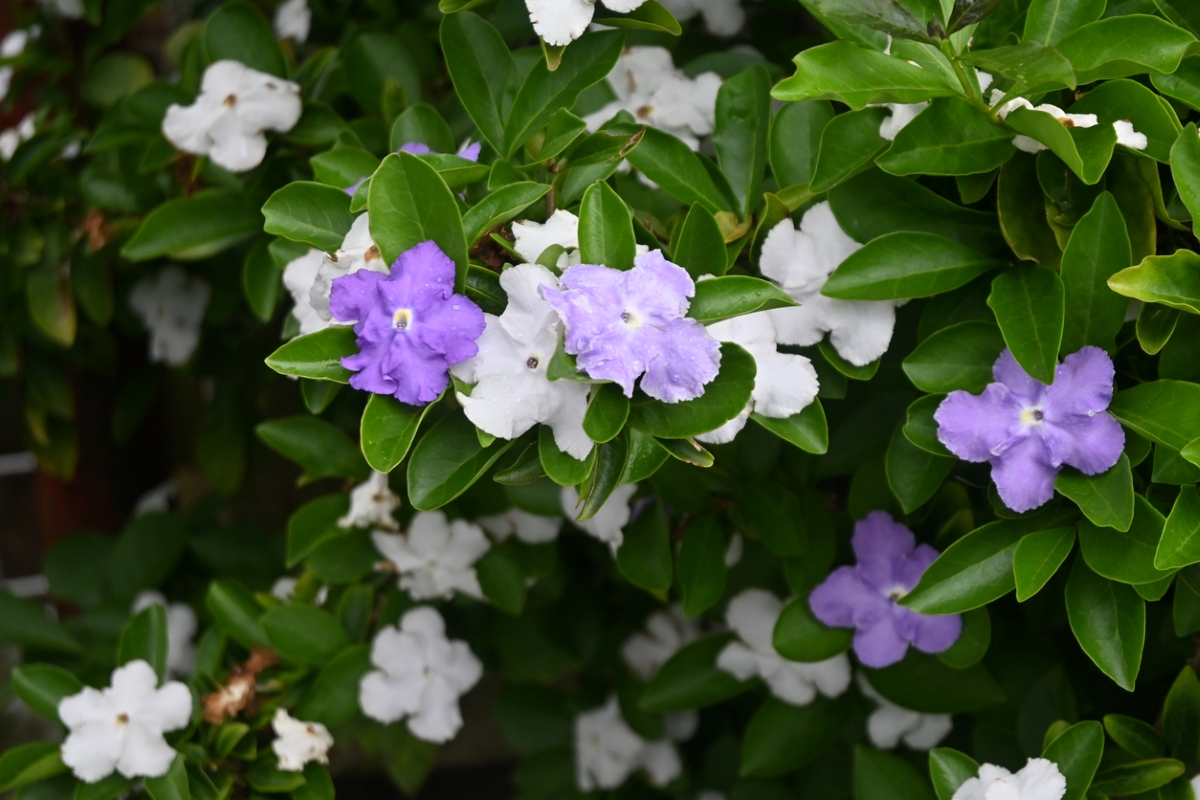
These purple-flowering plants, sporting 2-inch, 5-petaled disc-shaped blooms with white centers, actually only are purple in their “yesterday” phase. Afterward, they fade from lavender (“today”) into white (“tomorrow”). So the semi-evergreen shrub that grows to 10 feet in Zones 9 through 11 generally will show two shades of purple at once during its spring and fall bloom times. It will thrive in containers, as well as in the ground.
USDA Plant Hardiness Zones: 9 to 11
Best For: Container, patio
